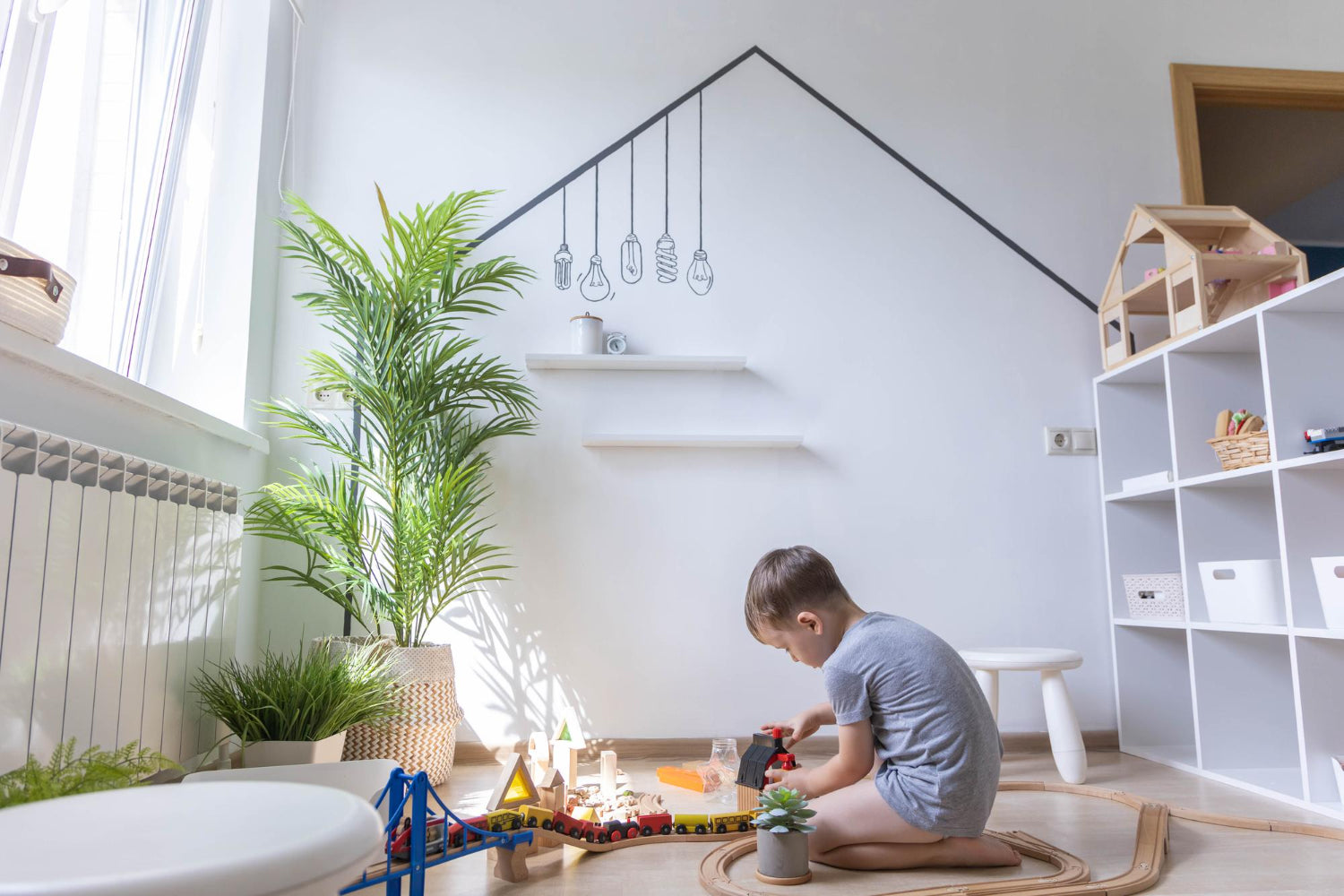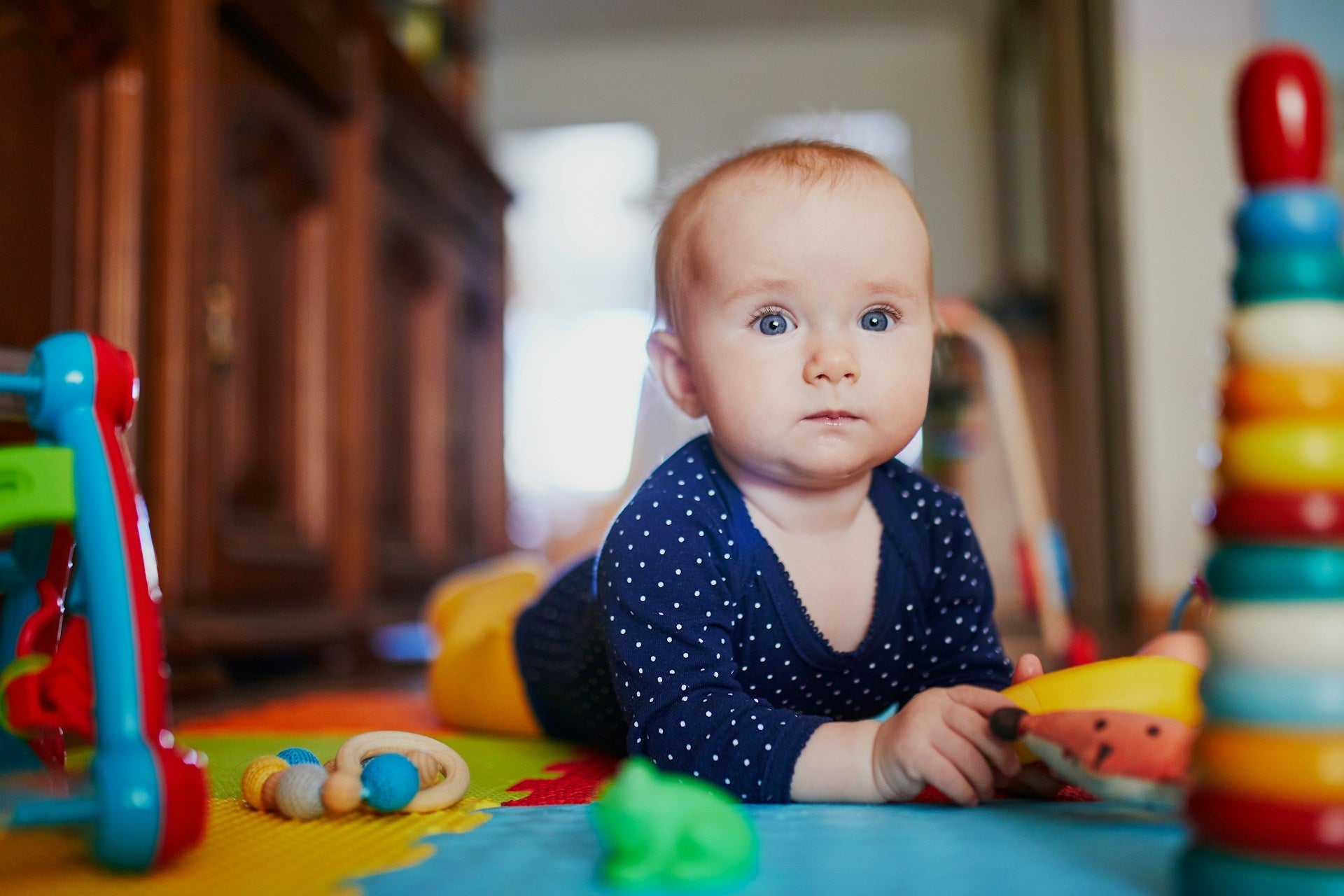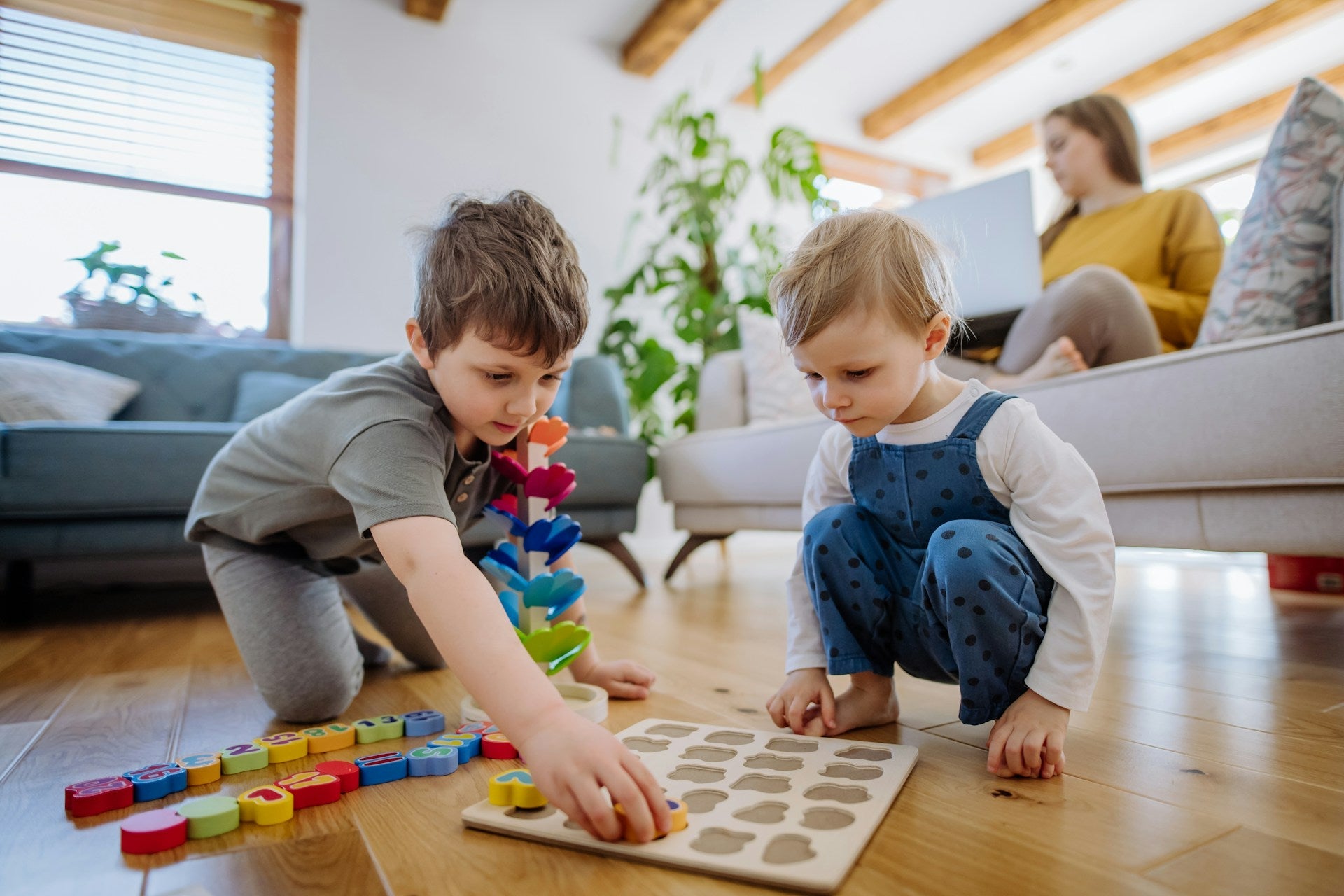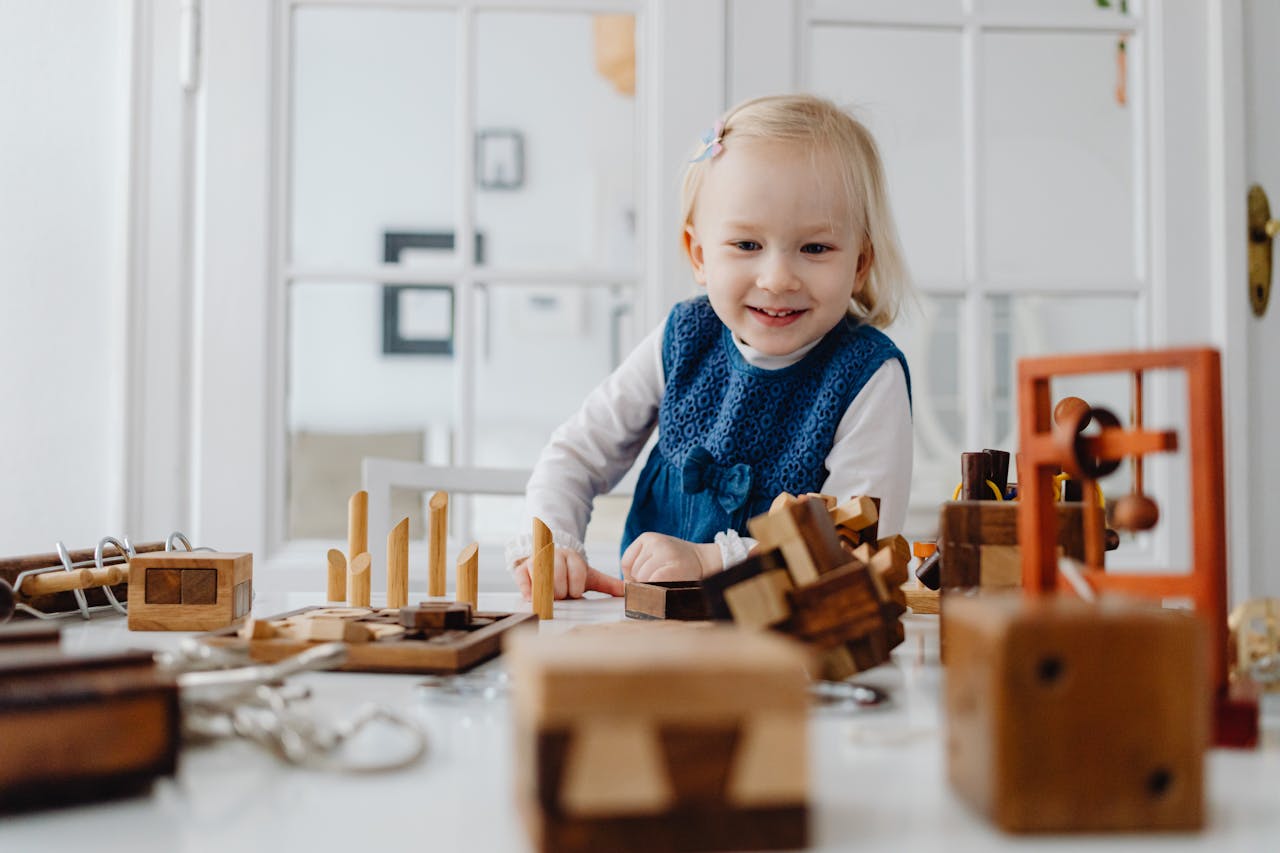How to Create a Montessori-Inspired Playroom at Home

Creating a Montessori-inspired playroom at home provides the perfect setting for encouraging your child's natural curiosity and desire for independence. This unique approach to play and learning focuses on allowing children to direct their activities while engaging with materials that stimulate their senses and intellect. A well-designed Montessori playroom serves as both a safe haven and an adventure ground for your little ones to explore and learn at their own pace.
The Montessori method encourages parents to set up a play area that supports freedom within boundaries, empowering children to make choices and engage deeply with their surroundings. With some careful planning and thoughtful selection of toys and materials, you can create a space that fosters confidence, creativity, and responsibility in your child.
As you embark on this journey, you'll discover how to harmonize simplicity and functionality in your playroom setup, allowing it to be an inviting and enriching environment. Unlocking the potential within your child's play space can have profound impacts on their learning and development, setting a foundation for a lifelong love of discovery and growth.
Start by choosing a dedicated space for your playroom. A quiet corner free from distractions is ideal. Keep the room organized with storage solutions that are easy for your child to use. Low shelves or baskets can hold materials at a height accessible for little hands. This accessibility encourages children to choose their activities and clean up afterward, promoting responsibility.
Minimalism is key in a Montessori playroom. Limit the number of items in the room to avoid overwhelming your child. Rotate toys and materials regularly to maintain their interest. Everything in the room should have a designated place, allowing your child to easily see what's available and choose freely.
Natural lighting and neutral colors create a calming atmosphere. Use child-sized furniture to empower your child to move around freely and confidently. Incorporating these elements nurtures a sense of independence and ownership, essential for a Montessori-inspired play environment.
1. Practical Life Tools: Include items like child-sized brooms, dustpans, or kitchen utensils. These tools teach practical skills and encourage children to take part in daily chores.
2. Sensory Materials: Consider providing a variety of textures and sensations. Sandpaper letters, fabric swatches, or a simple tactile board can enhance sensory experiences.
3. Natural Materials: Wooden toys, wool, and cotton are preferred. These materials are durable and provide a more organic feel compared to plastic toys.
4. Art Supplies: Keep art materials like colored pencils, watercolors, and paper available to stimulate creativity and self-expression.
5. Puzzles and Building Blocks: Choose puzzles and blocks that promote problem-solving and fine motor skills development.
Books should also be part of the playroom. Choose a mix of storybooks, picture books, and educational texts to encourage a love of reading. By carefully selecting and organizing materials, you create an environment ripe for exploration and learning, in line with Montessori's philosophy.
Each zone should have a place for specific materials, promoting a sense of independence by allowing children to find and return items themselves. Use low, open shelving to display toys and materials clearly. This setup encourages children to make choices and manage their belongings, fostering responsibility and independence.
Make sure pathways are clear and furniture is child-sized to allow free movement within the space. Plants or small rugs can act as natural dividers to differentiate zones without using physical barriers. Labels with pictures or words on shelves help reinforce organization skills and vocabulary, especially for younger children.
Incorporate seating areas or cozy reading nooks for quiet activities and reflection. Having these clear and distinct areas supports independent play by providing structure that doesn't overwhelm, allowing children to deeply engage with their surroundings.
1. Regularly Rotate Materials: Keep your child's interest alive by rotating toys and materials. Introduce new items slowly and remove ones that have become too familiar or aren't being used.
2. Encourage Participation: Involve your child in organizing their space. This practice teaches them about order and responsibility while also fostering a sense of ownership.
3. Observe and Adapt: Pay attention to how your child interacts with the space. Adapt and tweak the setup based on their evolving interests and developmental needs.
4. Limit Screen Time: Ensure the playroom remains dedicated to active learning by minimizing distractions from screens or electronic play.
5. Maintain Cleanliness: Regular tidying helps the space stay inviting and functional. Simple cleaning routines can also become part of your child's everyday practice.
At Hatchberry, we're here to support your journey in creating the perfect Montessori environment at home. Whether you're looking for the right materials or need expert guidance, we offer time-tested Montessori products and personalized coaching to help every step of the way. Explore your child's potential with a Montessori playroom tailored to their unique learning journey.
The Montessori method encourages parents to set up a play area that supports freedom within boundaries, empowering children to make choices and engage deeply with their surroundings. With some careful planning and thoughtful selection of toys and materials, you can create a space that fosters confidence, creativity, and responsibility in your child.
As you embark on this journey, you'll discover how to harmonize simplicity and functionality in your playroom setup, allowing it to be an inviting and enriching environment. Unlocking the potential within your child's play space can have profound impacts on their learning and development, setting a foundation for a lifelong love of discovery and growth.
Essential Elements of a Montessori Playroom
Setting up a Montessori playroom involves more than just buying the right toys. It's about creating an environment where your child feels comfortable to explore and learn independently. The essential elements of such a space include order, simplicity, and accessibility. These factors help children focus, make decisions, and engage actively with their surroundings.Start by choosing a dedicated space for your playroom. A quiet corner free from distractions is ideal. Keep the room organized with storage solutions that are easy for your child to use. Low shelves or baskets can hold materials at a height accessible for little hands. This accessibility encourages children to choose their activities and clean up afterward, promoting responsibility.
Minimalism is key in a Montessori playroom. Limit the number of items in the room to avoid overwhelming your child. Rotate toys and materials regularly to maintain their interest. Everything in the room should have a designated place, allowing your child to easily see what's available and choose freely.
Natural lighting and neutral colors create a calming atmosphere. Use child-sized furniture to empower your child to move around freely and confidently. Incorporating these elements nurtures a sense of independence and ownership, essential for a Montessori-inspired play environment.
Choosing the Right Materials and Toys
In a Montessori playroom, the toys and materials available play a crucial role in your child's development. They should be chosen carefully to align with the Montessori principles of fostering independence, concentration, and a love for learning. Look for toys that are open-ended and can be used in various ways, allowing creativity to flourish.1. Practical Life Tools: Include items like child-sized brooms, dustpans, or kitchen utensils. These tools teach practical skills and encourage children to take part in daily chores.
2. Sensory Materials: Consider providing a variety of textures and sensations. Sandpaper letters, fabric swatches, or a simple tactile board can enhance sensory experiences.
3. Natural Materials: Wooden toys, wool, and cotton are preferred. These materials are durable and provide a more organic feel compared to plastic toys.
4. Art Supplies: Keep art materials like colored pencils, watercolors, and paper available to stimulate creativity and self-expression.
5. Puzzles and Building Blocks: Choose puzzles and blocks that promote problem-solving and fine motor skills development.
Books should also be part of the playroom. Choose a mix of storybooks, picture books, and educational texts to encourage a love of reading. By carefully selecting and organizing materials, you create an environment ripe for exploration and learning, in line with Montessori's philosophy.
Organizing the Space for Independent Play
A well-organized Montessori playroom encourages children to explore and learn on their own. Clear organization helps children understand order and routine, which are key aspects of the Montessori method. Begin by dividing the room into different activity zones. These zones can include areas for art, reading, puzzles, and practical life skills, making it easier for children to choose their focus.Each zone should have a place for specific materials, promoting a sense of independence by allowing children to find and return items themselves. Use low, open shelving to display toys and materials clearly. This setup encourages children to make choices and manage their belongings, fostering responsibility and independence.
Make sure pathways are clear and furniture is child-sized to allow free movement within the space. Plants or small rugs can act as natural dividers to differentiate zones without using physical barriers. Labels with pictures or words on shelves help reinforce organization skills and vocabulary, especially for younger children.
Incorporate seating areas or cozy reading nooks for quiet activities and reflection. Having these clear and distinct areas supports independent play by providing structure that doesn't overwhelm, allowing children to deeply engage with their surroundings.
Tips for Maintaining a Montessori Environment at Home
Maintaining a Montessori environment involves consistency and a mindful approach. Here are some tips to ensure your playroom remains a rich learning space:1. Regularly Rotate Materials: Keep your child's interest alive by rotating toys and materials. Introduce new items slowly and remove ones that have become too familiar or aren't being used.
2. Encourage Participation: Involve your child in organizing their space. This practice teaches them about order and responsibility while also fostering a sense of ownership.
3. Observe and Adapt: Pay attention to how your child interacts with the space. Adapt and tweak the setup based on their evolving interests and developmental needs.
4. Limit Screen Time: Ensure the playroom remains dedicated to active learning by minimizing distractions from screens or electronic play.
5. Maintain Cleanliness: Regular tidying helps the space stay inviting and functional. Simple cleaning routines can also become part of your child's everyday practice.
Conclusion
Setting up a Montessori-inspired playroom at home takes thoughtful planning and a commitment to fostering independence. By focusing on organization, selecting meaningful materials, and maintaining a structured yet flexible environment, you provide your child with a space that promotes exploration and growth. This approach not only supports their current development but also establishes habits and skills that will benefit them throughout life.At Hatchberry, we're here to support your journey in creating the perfect Montessori environment at home. Whether you're looking for the right materials or need expert guidance, we offer time-tested Montessori products and personalized coaching to help every step of the way. Explore your child's potential with a Montessori playroom tailored to their unique learning journey.








